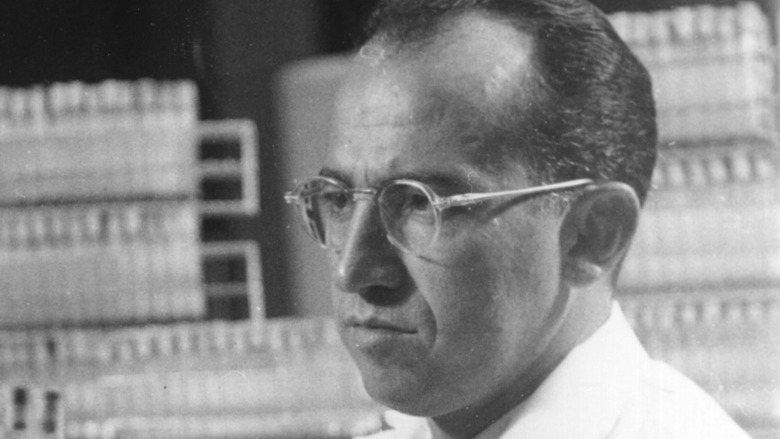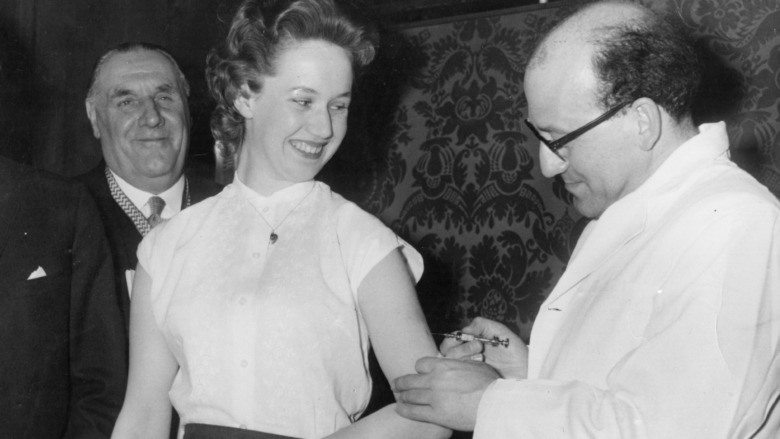How Much Jonas Salk's Polio Vaccine Would Have Been Worth Had He Patented It
Vaccines can generate enormous revenues. The COVID-19 vaccines should generate $18 billion per quarter, for instance, according to Fierce Pharma, with the Pfizer and Moderna versions accounting for about $11 billion of that.
Yet, Jonas Salk, creator of the polio vaccine — combatting a disease that paralyzed approximately 35,000 children annually in the 1950s, according to Democracy Now – did not patent his creation. Edward R. Murrow interviewed Dr. Salk for an April 12, 1955 TV program. As quoted by Slate, the legendary broadcaster asked the scientist who owned the patent. Dr. Salk replied, "Well, the people, I would say. There is no patent. Could you patent the sun?"
Salk, a bacteriology professor at the University of Pittsburgh, wanted the vaccine readily available to the public. Plus, he had help in its development and rollout. His research used techniques developed by three virologists — John Franklin Enders, Frederick C. Robbins, and Thomas H. Weller — who formulated a way to grow large quantities of poliomyelitis virus on tissue scraps without self-contamination. Dr. Salk used their method to develop his vaccine, said Britannica. The three researchers would win the 1954 Nobel Prize for Physiology or Medicine.
President Franklin D. Roosevelt, who might have been paralyzed from the disease in 1921 at the age of 39, also made efforts to combat polio by forming the National Foundation for Infantile Paralysis, now known as the March of Dimes Foundation. The group helped fund the research and trials for Dt. Salk's vaccine, according to History. The money came mostly from $7.5 million in donations.
Eradicating a devastating disease
Albert Sabin developed an oral vaccine, right after Salk's version appeared. It became available in 1962, and he also opted to not patent it. His research featured a live-virus approach, reported the History. Salk created a vaccine using a killed virus by first growing samples and then adding formaldehyde to prevent its reproduction.
Salk believed in his vaccine so much that he tested it on himself and his family after first conducting trials on monkeys and a few children. "I just hated injections," recalled his son Peter Salk, the oldest of three brothers, to NPR. "So my father came home with polio vaccine and some syringes and needles that he sterilized on the kitchen stove, boiling them in water, and lined us kids up and then administered the vaccine."
After the Salk family received their shots, about two million American children received inoculations during 1954 in the largest human trial to date, says Health Day. By April 12, 1955 — the day of Dr. Salk's Murrow interview — the shot was deemed effective and safe.
Salk's discovery could have netted him $7 billion if he had patented his vaccine, according to Forbes. But his gift to mankind was enormous. Polio in the United States almost disappeared in the early 1960s, and only appears occasionally globally in areas such as Pakistan, Afghanistan and Nigeria. According to the CDC, 2020 saw about 441 cases worldwide, compared to 378 in 2019 and 71 in 2018.

